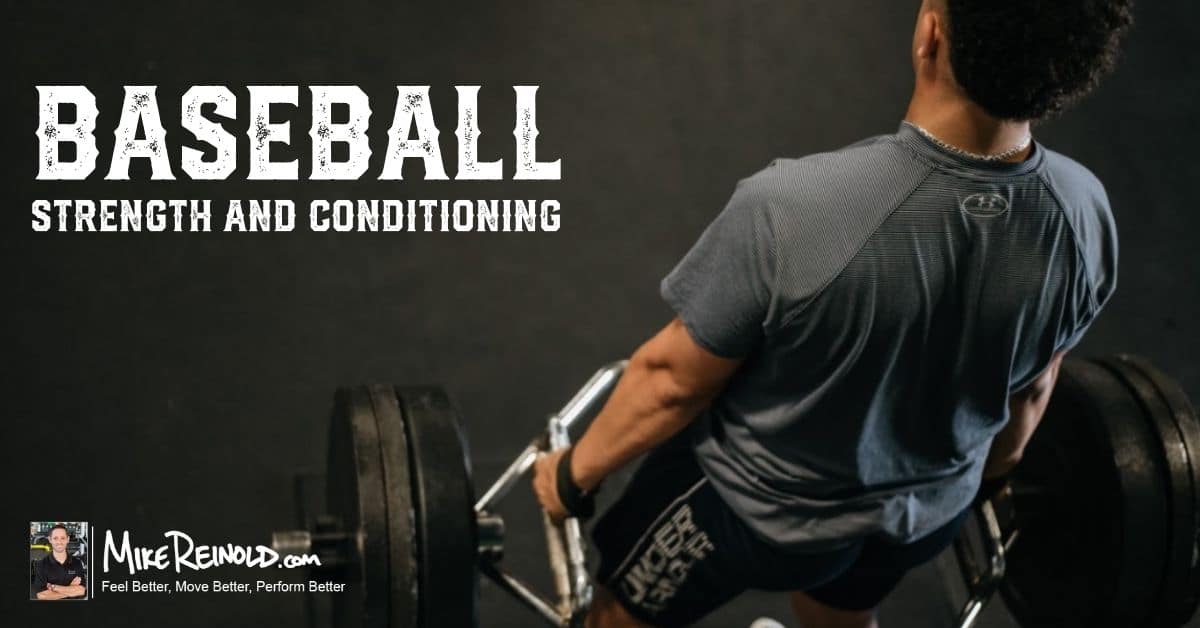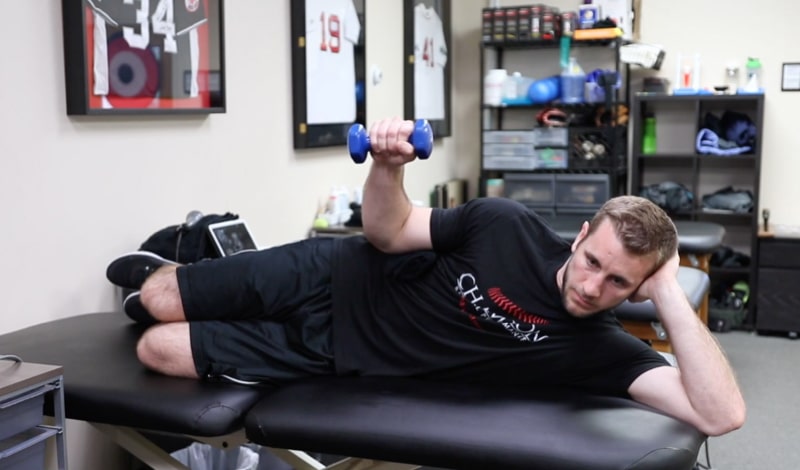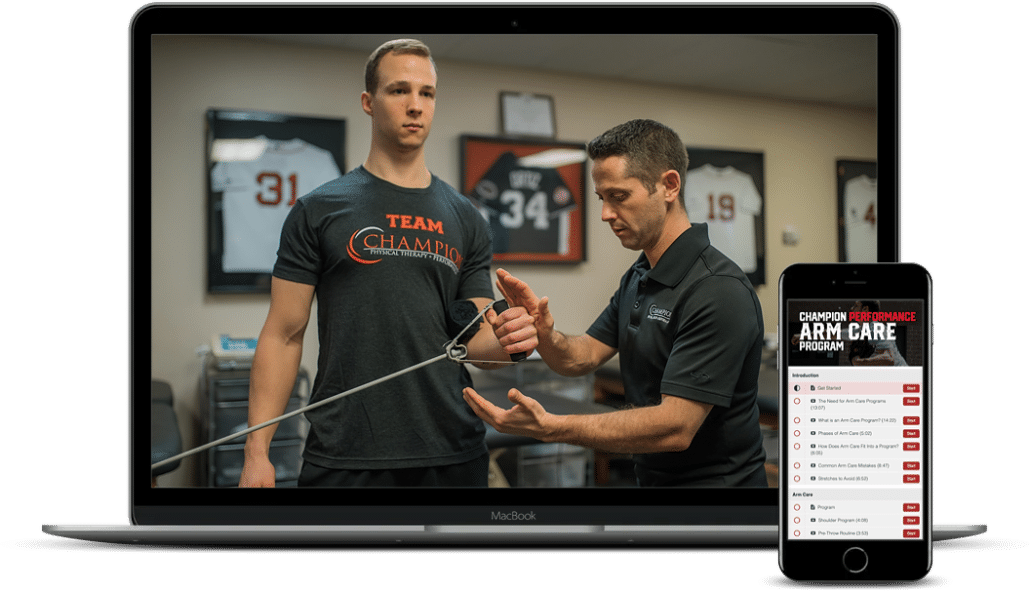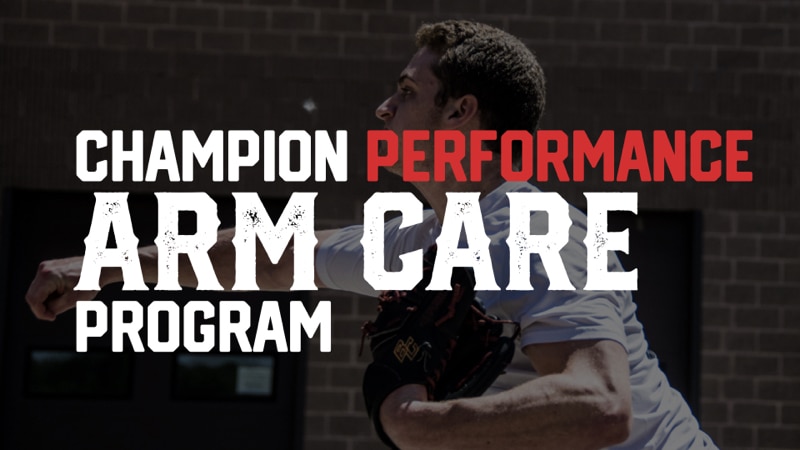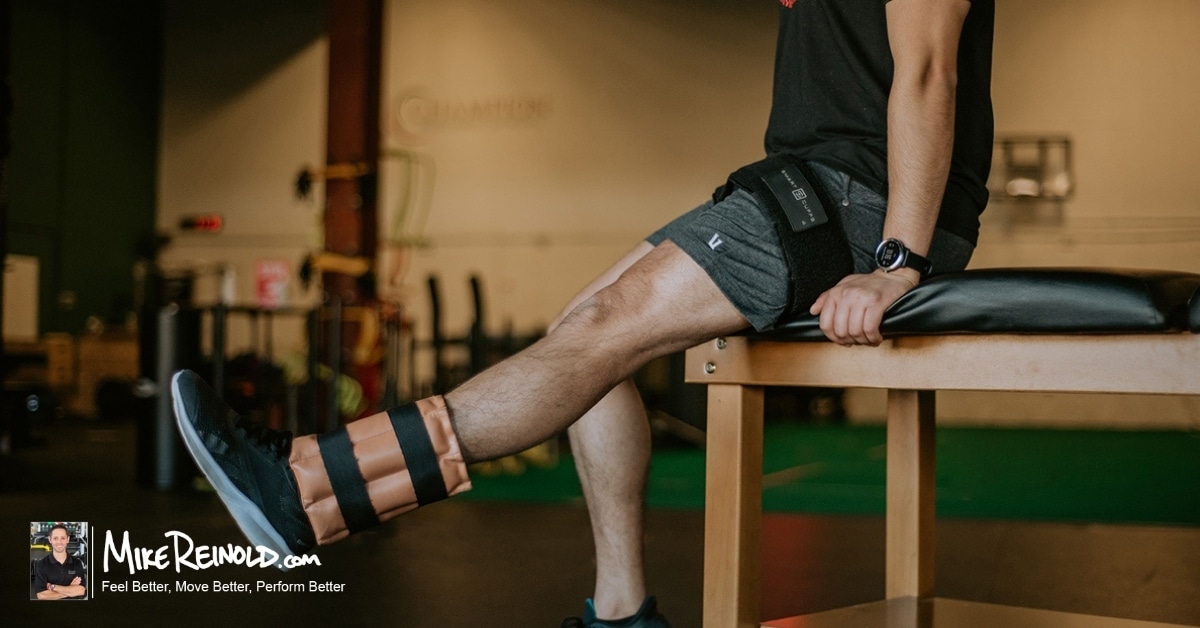Offseason baseball strength and conditioning programs have evolved over the years. What used to be seen as a competitive advantage, baseball offseason training programs are now the norm. Instead of being seen as an advantage, it’s now common knowledge that if you don’t participate in a baseball performance program, you’ll be at a disadvantage.
Every baseball player has the goal of playing at the next level, maybe that’s playing college baseball, or maybe you even want to get drafted by a professional MLB team. But how do you get there? It’s not enough to get by on talent alone these days. There are lots of talented baseball players around the country. You need to put yourself in a better position to succeed.
It takes work.
Enhancing your baseball performance starts with an offseason strength and conditioning program.
Every player around the country is faced with similar obstacles as you. School schedules, sports schedules and more. What is going to separate you from the rest? What is going to make a college coach recruit you? What’s going to make a scout notice you more?
6 Keys For a Successful Offseason Baseball Strength and Conditioning Program
In this article, we are going to break down the 6 keys for a successful offseason baseball strength and conditioning program. These are the principles we use when we build our programs for our athletes, from Little League all the way to the Big Leagues.
Click below to jump to a certain section:
- 6 Keys For a Successful Offseason Baseball Strength and Conditioning Program
- Key #1 – Arm Care Program for Baseball Players
- Key #2 – Power Development for Baseball Players
- Key #3. Strength Training and Workout Programs for Baseball Players
- Key #4. Speed and Conditioning for Baseball Players
- Key #5 – Core Stabily for Baseball Players
- Key #6 – Nutrition and Recovery Methods for Baseball Players
- Putting it All Together
Key #1 – Arm Care Program for Baseball Players
There really is no excuse for SERIOUS baseball players to not take care of your arm.
If you are a baseball player, you should be performing an arm care program. An appropriate arm care program is one of the foundational pillars of any baseball player’s program, however, it is often one of the most neglected areas.
Many players from youth all the way through college have never performed an arm care program. All of the big league players do, why aren’t you?
Think about it this way, if you are performing a strength training program, getting pitching lessons, or participating in a long toss or weighted ball program and NOT following an arm care program, well your priorities are reversed. It doesn’t matter how well you build your body if your arm can’t handle the stress. You can’t frost the cake before you bake it!
We understand that not everyone has heard of an arm care program and most people don’t have access to a good one. That’s why we want ALL baseball players to have access to an arm care program, and that’s why we give away the Champion Baseball Arm Care Program for free!
Key #2 – Power Development for Baseball Players
I have not met a baseball player who did not want to become more powerful and explosive. Same goes for coaches and parents we talk with regarding players.
Baseball is a game that is power based. Every movement on the field from swinging, sprinting, and throwing requires a high level of power, especially linear and rotational power.
So, how do we develop that?
Your workout program should incorporate the following:
- Medicine Ball Exercises
- Jumping and Plyometrics
- Strength Training (more on that in a the next section)
- Sprints (more on that later, too)
Yes, there are ways that we can incorporate lifting for power development, but remember, everything must work together, it is not a one size fits all, or pick one from the list above to focus on.
Medicine Ball Work for Baseball Players
With baseball being a rotational power sport, this is where we like to utilize medicine balls. Here are just a few of the benefits for med balls:
- Improved coordination in movements demanding high rate of force development in all planes of motion (especially rotational power)
- Improved ability to control and decelerate rotational forces
- Improved kinetic linking through which helps the ability to generate and transfer force through the body.
- Injury prevention because athletes are training to control rotation and deceleration
While there are many ways to use med balls, we typically like to start with slams, scoops, and shotputs for many of our athletes. Here are some examples:
Med Ball Side to Side Overhead Slam
Stepping Med Ball Scoop Toss
Med Ball Rotational Shot Put Toss
One other item to keep in mind for med balls is the term “intent.” For athletes, one common goal is becoming faster and quicker. Med balls are great for developing these qualities. However, many athletes can’t check their ego at the door when they start training with med balls. They will grab the heaviest possible ball to throw or slam…VERY SLOWLY!
If the med ball is moving slowly, are you truly gaining the benefits of ballistic training? Probably not.
You have to put full effort and intent into each throw, and you have to find an appropriate weight that allows you to move quickly. This is how med balls were designed to be used. Med ball exercises are truly a “you get what you put into it” exercise.
Jumping and Plyometrics for Baseball Players
Another crucial aspect for developing power is jumping and plyometrics. Now, I’m just going to put this out there, you do not need an entire workout day devoted to jumping. That becomes more of a conditioning workout, and defeats the true purpose of developing power.
When starting off, you must develop your brakes. Even the fastest race cars in the world still have brakes.
Focus on your landings, and maintain your stability and balance. Crush that early on to set yourself up for success later on.
Now, when it comes to plyometrics, we like to focus on sagittal plane (forward) and frontal plane (side to side) movements. These can also be broken down into single leg variations and two leg variations.
For sagittal plane, here are a few examples.
Band Resisted Broad Jump
Seated Weighted Vertical Jump
And here is a few example of frontal plane plyometrics.
1 Leg Hop to Lateral Bound
2 Leg Lateral Pogo Hop
Key #3. Strength Training and Workout Programs for Baseball Players
If your goal is to play baseball at the highest level, you need to set yourself up for success. That starts with a solid strength training program. As your strength increases so will your skills and baseball abilities.
But most generic strength and conditioning programs aren’t ideal for baseball players. Some don’t train the right qualities to improve baseball performance, while others may include disadvantageous exercises that may be bad for baseball players.
It’s important to follow a baseball-specific strength and conditioning program. And if you’re a youth baseball player, you should follow one specifically designed for your age, not a professional athlete.
When performed and structured properly, a baseball strength training program will help take athletes to the next level and prepare them for their goals. We know strength training increases power production, speed, and stamina so you can play harder and longer. It will also reduce the chance of injury, stronger muscles create more stable joints.
You will be more prepared to play at a higher level, making you more appealing to college recruiters.
A good strength training program will incorporate in some shape or another, what we call foundational movement patterns. These movement patterns are broad umbrella categories, which many exercises can fall under.
- Hinge Pattern – Deadlifts, RDL’s Hip Thrusts
- Squat Pattern – Goblet Squat, Front Squat, Back Squats
- Pull Pattern – Cable Row, Dumbbell Row, TRX Row
- Push Pattern – Pushups, Dumbbell Bench Press, Landmine Press
- Single-Leg Training – 1 Leg RDL, Reverse Lunge, Step Ups
Strength training will enhance everything you do on the field when incorporated correctly, and it’s never too early to start. Creating the proper strength program means taking into consideration where you are and where you want to go.
There are many things to keep in mind when building a program. Some big picture items to keep in mind though are:
- Your strength training should reflect and develop your current abilities, goals, and sport
- Train to failure can sometimes limit you, strength training is used to enhance your skills not hinder your performance, especially for younger athletes
- If you’re a young athlete don’t worry about specializing in your sport, train to master the movements, become more athletic, and work on long term development
- Strength training, like skill work, is a process so take your time and look at long term progressions, nothing will happen overnight
Key #4. Speed and Conditioning for Baseball Players
Speed and Conditioning for baseball players is often very misunderstood and for many, a lost opportunity to develop a crucial aspect of your performance. We all want to be faster, quicker, and recover sooner, but our speed and conditioning program needs to be able to enhance that. For many, conditioning is often viewed as a “punishment” or just simply, “going for a run.” Many coaches out there usually just fill time with something to make you tired or it was what they did as a player back in the day.
It is so much more than that.
Look, we have all experienced a “speed and conditioning program” that was more in line with a seek and destroy mission. But, are those sessions actually getting you faster? Or are they building up “mental toughness.”
Let’s breakdown what we feel are 3 big umbrellas that you must work on:
- Acceleration
- Absolute Speed
- Multi-Direction / Agility
Acceleration for Baseball Players
We are breaking down acceleration as the first 10 yards or so in your sprint. Acceleration is a major factor for baseball players as that can make or break getting to that ground ball, catching that ball in the gap, or beating out that infield single.
Not to mention the impact acceleration has on the 60 yard dash and home to first times, which are universal measurable metrics for baseball recruiting.
What is Acceleration?
Plain and simple, acceleration is the act of increasing your speed while running. For baseball players, this is accelerating down the line to beat out the play at first, or accelerating to a ball in the gap as an outfielder. Acceleration will continue to build until you hit your top speed. This is a key point for baseball players, as most athletes will hit top speed around 40 yards (give or take).
A large point to bring up is you need to produce force. So many athletes, parents and coaches want “fast feet” but often neglect that you need to produce large amounts of force when accelerating.
We are also seeing a correlation between 10 yard dash times and throwing velocity increases!
Absolute and Top End Speed for Baseball Players
As you transition out of your acceleration and first initial burst, typically after the first 10-20 yards, you begin to enter what we call the Absolute and Top End Speed transition.
As your body moves out of the acceleration position and forward lean, your torso will become taller as you get further into your sprint. In the game of baseball, this occurs in the outfield, double, triples, or long duration base running.
Absolute and top end speed plays a crucial role during your baserunning, 40 yard dash and home to first times. The 40 yard dash and home to first times are important for college recruiting.
Multi-Direction and Agility for Baseball Players
First off, what is agility? Agility in a nutshell is any dynamic sporting action or movement that involves whole body change of direction. There are many factors that are at play with multi-direction and change of direction movements.
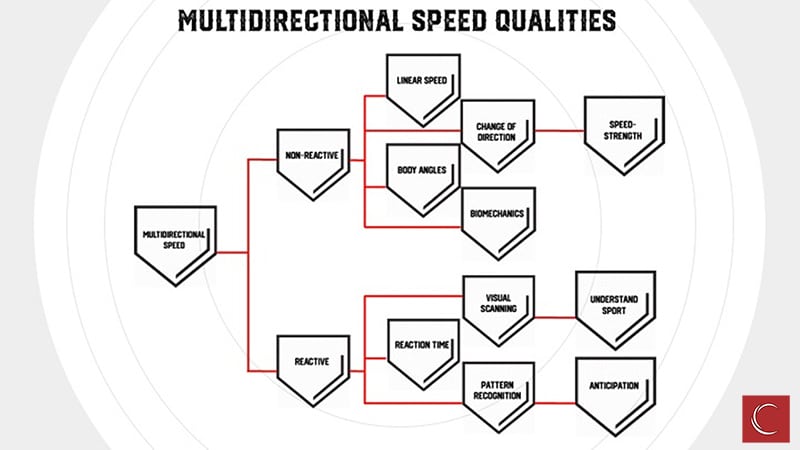
If your body is not prepared for these forces, you run the risk of a slow recovery when changing directions, or worse; injury.
These movements are also key to speed training for baseball players who are constantly running through different positions on the field. Your speed and conditioning program should enhance that!
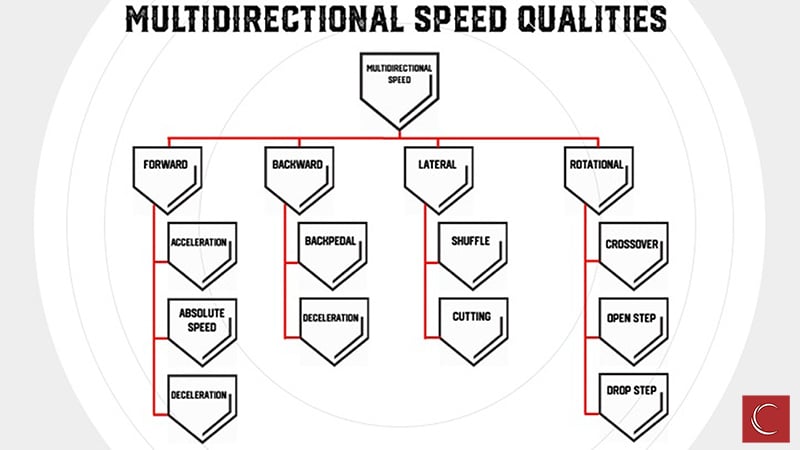
Wrapping up this Speed and Conditioning section, we must remind you, it is important to train ALL aspects! To be a well rounded athlete, you must fill up all of your developmental buckets!
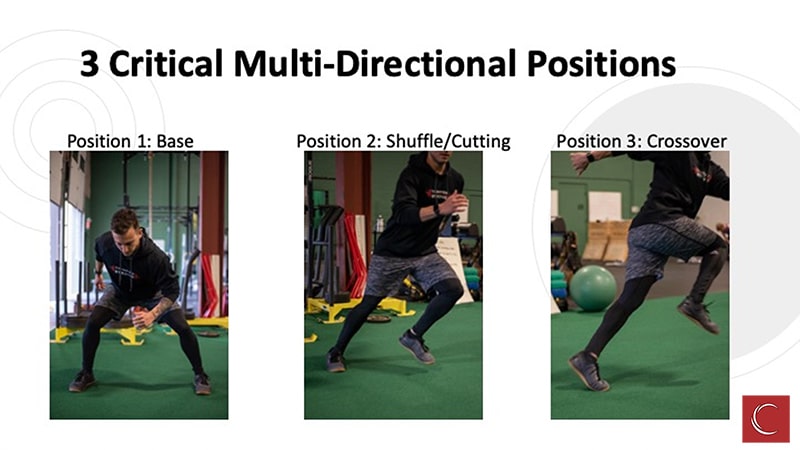
Key #5 – Core Stabily for Baseball Players
Core strength and stability is one of the most requested questions and concerns we receive from players, coaches, and parents. For good reason as well…baseball and rotational sports generate some of the biggest forces within sports, all at high speeds and end ranges of motion.
Core stability is the center of it all.
When it comes to building core strength for baseball players, we must remember what the core is supposed to do and function as… protecting the spine. For baseball players and overhead athletes, you are rotating, extending, flexing, and at high forces. We must increase core strength and create stability to support the high demands of the sport of baseball.
Here are just a few of the benefits of having a strong core:
- Helps decrease lower back pain or stiffness
- Helps decelerate your body when throwing or rotating forcefully
- Improves sports performance
- Improves your stability
- Can help your mobility
- Will help with power production and becoming more explosive
- Helps build up strength in your lifting program
- Helps you repeat high dynamic effort (especially for tournaments)
Recent research from spine specialists such as Dr. Stuart Mcgill has shown that the major role of our core muscles is to resist movement rather than creating it. These “anti” based core principals help baseball players and athletes stabilize the hips and spine during athletic movements (such as throwing, sprinting, hitting, jumping).
When it comes to the “anti” core movements, we like to group these into the following categories.
Anti-extension exercises – Dead Bugs are a great example:
Anti Rotation exercises such as the tall kneeling anti-rotation iso hold:
Anti Lateral Flexion Exercises such as side planks:
It’s important to know that it takes a combination of each of these core principles to help you develop solid core strength and foundation. Think of each one as a bucket, we must fill up each bucket to maximize your performance, core strength, and help reduce your risk of injury.
We like to incorporate all of those principals within your workout program. This way, we are assisting the strength exercise, while also connecting the dots with your core strength.
Key #6 – Nutrition and Recovery Methods for Baseball Players
Proper nutrition and recovery can make or break your baseball performance. The foods you choose to fuel your body will directly impact your performance and recovery. Understanding how to choose the right foods at the right time will help you prepare your body to compete at the highest level.
Here are a couple of key items to help you when it comes to nutrition and recovery:
- Eat the right foods at the right time.
- Consume high-quality protein.
- Drink plenty of fluids.
- Save major changes and goals (i.e., weight changes) for the offseason.
What you eat and when you eat it plays an extremely large role in baseball performance. There are three major sources of fuel for your body: protein, carbohydrates, and fats. Each of these macronutrients are extremely beneficial to baseball players, but when you eat them at the right time they can take your performance to the next level.
Carbohydrates are a player’s primary source of energy. These should be consumed throughout the day, and around game or training times to help provide enough fuel and energy for performance.
High-quality proteins are a player’s primary source of muscle recovery. Protein helps repair and rebuild muscles, which directly impacts how well your body recovers after activity. These should be consumed throughout the day, and right after game or training times to help kick start the muscle recovery process. In order to improve recovery, pair your high-quality protein with carbohydrates!
Fats are the last piece of the puzzle for a baseball player’s nutrition. Healthy fats should be consumed throughout the day, but not too close to game and training times. Since fats are slower digesting, they tend to slow down performance if consumed too close to game and training times.
Proper nutrition and recovery directly impact baseball performance. Learning how to navigate and implement a nutrition and recovery plan specific to the individual will help improve performance and compete at the next level.
Putting it All Together
If your goal is getting to the next level of baseball, no matter if that’s high school varsity, college, or professional, you should focus on truly maximizing your offseason program. These 6 keys for a successful offseason baseball strength and conditioning program will truly help get you started in the right direction.
If there is one thing we hope you take away from this article is that it takes a combination of EVERYTHING to truly maximize your off-season program. To really have a competitive advantage, you’re going to need to put all 6 of these keys together to build your baseball training program.
Champion’s Baseball Performance Programs
If you want to follow some of the same programs as our athletes at Champion, you now can. We’ve built out online versions of our programs that are based on the same programs performed by our pro, college, high school, and youth athletes at Champion. Using the same 6 keys above, we’ve created a variety of programs for advanced and youth players looking for strength and conditioning programs, speed and agility programs, bat speed programs, nutrition, and more.
These programs were built to support these 6 keys for a successful offseason by building your strength, power, agility, mobility, and endurance. We have no doubt that they will help enhance your pitching velocity, power off the bat, sprint speed, and fielding agility.
Get Our Free Arm Care Program
If you want to follow our arm care program, you can now access it for free. We include a bunch of educational videos, a printable program, and demonstration videos of everything you need to get started. These are based on our research on the exercises needed to improve baseball performance.
Not only are we going to give you a free program with video demos, but you will also receive access to over 50 minutes of videos that discuss the following:
- The Need for Arm Care Programs
- What is an arm care program
- Phases of Arm Care
- How Arm Care fits into a program
- Common Arm Care Mistakes
- Common Stretches to Avoid
We want everyone to be able to follow a proper program and understand everything they need to know to stay healthy and perform their best.
About the Author

Nick Esposito is a strength and conditioning coach with us at Champion PT and Performance in Boston, MA. Nick coordinates our baseball strength and conditioning programs with our athletes of all ages. In addition, he has an amazing website with information for baseball and softball players.

